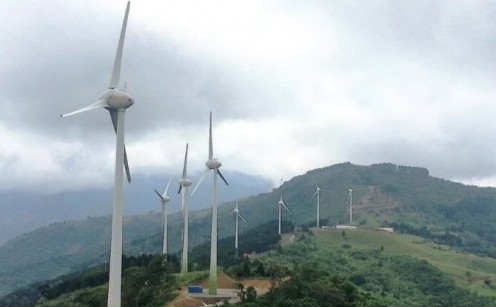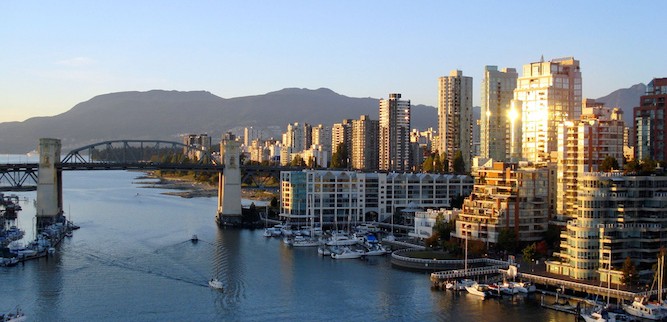Many municipalities across the globe are re-configuring their energy systems to pave the way for a more sustainable future. To date, 55 cities, totaling more than 54.9 million people are currently in the process of transitioning to 100% renewable energy in at least one sector.
It seems that a global carbon-free society is not as far from our reach as we had previously thought, and municipalities are leading the charge. By 2020, experts predict that 26 percent of the world’s energy will be generated by renewable sources!
Here are just three of the many leaders of the renewable revolution who are making the switch to 100% clean energy:
Vancouver, BC, Canada
 In March 2015, Vancouver became the first Canadian city to pledge to transition to 100% renewable energy by 2050. The city already ranks second in environmental performance in North America according to the Green City Index and the city’s Mayor, Gregor Robertson, has set an even more ambitious goal of making it the greenest city in the world. The city’s strategy for success includes advancing energy conservation and efficiency programs (e.g. increasing municipal bike networks), switching to already available forms of renewable energy and making improvements to existing infrastructure (e.g. widespread use of electric vehicles), and increasing the supply of clean energy infrastructure (e.g. rooftop solar power generation).
In March 2015, Vancouver became the first Canadian city to pledge to transition to 100% renewable energy by 2050. The city already ranks second in environmental performance in North America according to the Green City Index and the city’s Mayor, Gregor Robertson, has set an even more ambitious goal of making it the greenest city in the world. The city’s strategy for success includes advancing energy conservation and efficiency programs (e.g. increasing municipal bike networks), switching to already available forms of renewable energy and making improvements to existing infrastructure (e.g. widespread use of electric vehicles), and increasing the supply of clean energy infrastructure (e.g. rooftop solar power generation).
The greatest challenge however, will not be the city’s electricity, as almost 95% of Vancouver is already powered by renewable sources. The real obstacle, says Mayor Robertson, will be transforming the transportation sector, a task that will hinge entirely on how quickly electric vehicles will become an affordable option.
Oxford County, ON, Canada

Located in the heart of Southwestern Ontario and home to eight municipalities including Woodstock, Oxford County became the first region in Ontario to commit to a 100% renewable energy by 2050 in June 2015. Oxford county’s renewable target is supported by the County Community Sustainability Plan, which includes emission reduction goals, sustainable construction measures and decarbonizing the transportation sector. Initiatives also include renewable energy projects such as Woodstock’s White Lanes MicroGrid project, private sector investments supported by public policy like the Oxford Gardens solar thermal facility, Tesla electric vehicle charging stations at the local Quality Inn, and a biogas project at Greenholm Farms.
San Jose, Costa Rica
 Perhaps one of the world’s most ambitious cities striving toward 100% renewable energy is San Jose, Costa Rica, which has committed to becoming carbon neutral by 2021. In fact, the entire country, though home to only 5 million people, is promising to be the first to go 100% green by adopting a nation wide carbon-free energy system. The country has already made monumental strides with achievements such as only using renewable energy to generate power for the first 75 days of 2015, a first for any nation! Costa Rica’s government has also pledged to support the switch to electric transportation as part of its carbon neutral target, allocating various customer and industry incentives, needed to overcome market barriers during these transitional years.
Perhaps one of the world’s most ambitious cities striving toward 100% renewable energy is San Jose, Costa Rica, which has committed to becoming carbon neutral by 2021. In fact, the entire country, though home to only 5 million people, is promising to be the first to go 100% green by adopting a nation wide carbon-free energy system. The country has already made monumental strides with achievements such as only using renewable energy to generate power for the first 75 days of 2015, a first for any nation! Costa Rica’s government has also pledged to support the switch to electric transportation as part of its carbon neutral target, allocating various customer and industry incentives, needed to overcome market barriers during these transitional years.
The nation has already achieved 95-99% renewable electricity, approximately 80% of which is produced by hydro-power. Moving forward, Costa Rica may diversify its renewable electricity system and emphasize ecologically sustainable technologies, such as solar, small wind turbines, and biogas from organic waste.
Dozens of other municipalities around the world, including Aspen, Colorado; Copenhagen, Denmark; and Frankfurt, Germany; have also committed to renewable energy targets. Despite the growing number of sustainable cities around the world, we continue to face many barriers as we strive to make a renewable energy future a reality. Although the price of renewables is continuing to drop, obstacles in both political support and technology (lack of storage, etc) play a large role in our clean-energy journey.
Nevertheless, switching to renewable energy is proving to be the most cost-effective, logical approach to achieving a cleaner and more sustainable energy future.
Written by guest blogger Sara Ganowski
Header Image source: “Downtown Vancouver” by Flickr user JamesZ_Flickr, licensed under CC By 2.0
Image of Vancouver bike: InsideVancouver.ca
Image of Oxford County Ontario: “IMG_0421_2 Dairy Farm! Oxford County, Ontario!” by Flickr user Norma Thomas, licensed under CC BY-NC 2.0
Image of wind power in Costa Rica: Metaefficient.com
